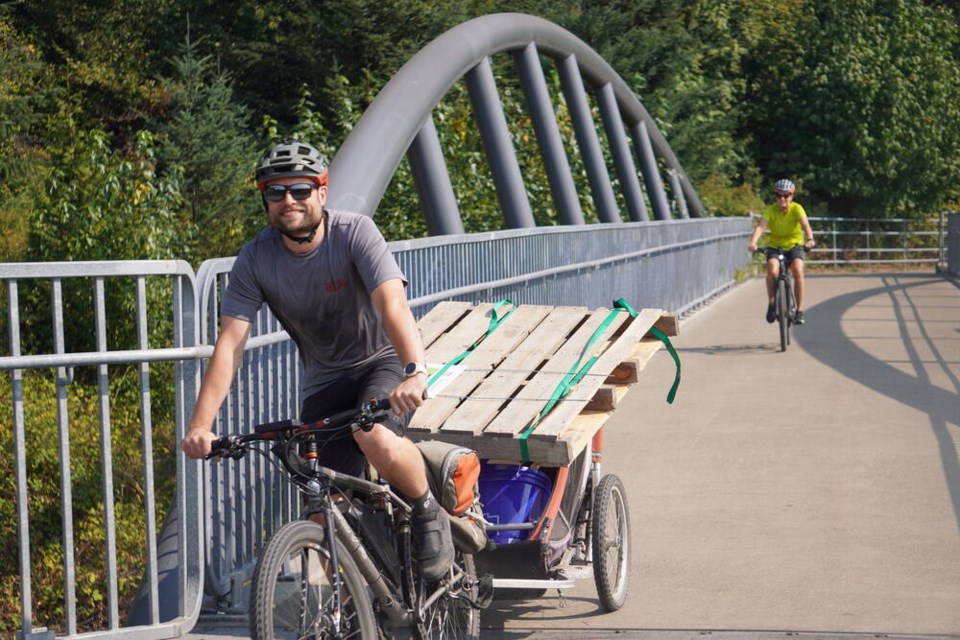On your marks. Get set. Deliver critical goods in a disaster scenario.
While not the typical instructions cyclists receive in competition, that was the task given to cargo bike riders in the race on Aug. 26. Spanning eight checkpoints across North Vancouver, it was the first event of its kind in Canada.
Inspired by a similar event in Oregon, the DRT race in North Van was designed to showcase the versatility and resiliency of cargo bikes, while preparing for what could happen in a real earthquake, said co-organizer Duncan Wilcock.
In the race, nine cyclists – most on cargo e-bikes – were faced with the following mock scenario:
“It’s four days after The Big One, a magnitude-9 earthquake. You and your neighbours are running low on food, fresh water, fuel and medicine. Emergency services are swamped, major bridges are closed, and minor bridges may not be safe for vehicles to pass over. But it is safe for citizens on bikes to pass over those bridges and they can also route their way around closed roads and past debris.”
Racers were timed as they rode to checkpoints including Capilano Mall, Lynn Creek and Capilano University, where they would pick up and deliver relief supplies like food, water and fragile medicines (represented by eggs). Participants had to navigate the course with an old fashioned paper map (cell phones weren’t allowed because batteries are too precious to waste on handheld devices, and networks could be overloaded or down).
Riders had to traverse obstacles such as barriers, rough terrain and a water crossing, delivering up to 50 kilograms of supplies by the time they reached the finish line.
Cargo bike 'a resilient tool that's human scale'
After a massive earthquake, getting around by car could be difficult or impossible, depending on the terrain.
But with a cargo bike, “you have a resilient tool that’s human scale. You can lift and carry it over big obstacles if you need to … you’re not 5,000 pounds on a bridge, Wilcock said.
Aside from their capabilities in a disaster, Wilcock said the race also demonstrated the high utility as cargo e-bikes as an everyday vehicle..
“It really showcased also how fast they can move to the city – no traffic, no trouble parking,” he said, adding that Canada Post and companies like FedEx and DHL are now using them to make deliveries.
Overall, the event was a ton of fun, Wilcock said.
“I was doing photography … I’m actually quite fast on my bike, but I had a really hard time trying to try to keep up,” he said. “They moved so fast through the urban environment.”
And while the organizers’ ambitions were larger, the inaugural race was a successful pilot for a larger race next year,” Wilcock added.
“We wanted to bring in some ham radio operators to increase the scale of the disaster relief aspect of it [with] emergency communications,” he said. “It’s something we could see for a future year.”



